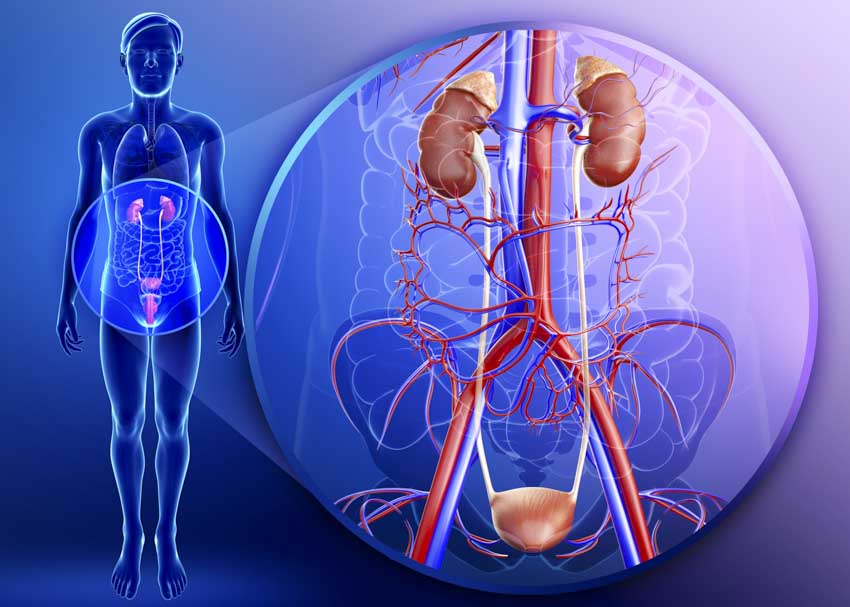
Acupuncture improves bladder function for spinal cord injury patients. First Affiliated Huai’an People’s Hospital of Nanjing Medical University researchers find acupuncture combined with intermittent catheterization alleviates neurogenic bladder dysfunction caused by traumatic spinal cord injuries . The study found significant improvements in bladder capacity, residual volume, urinary flow rate, urinary volume, and detrusor pressure following this combined treatment approach. [1]
A total of 80 patients with traumatic spinal cord injuries were recruited for the study and were randomly assigned to the treatment group (n=40) or the control group (n=40). The treatment group received acupuncture treatment combined with intermittent catheterization. The control group was treated with intermittent catheterization alone.
The treatment group was comprised of 22 male and 18 female patients, aged 21–57 years (mean age 43 years). There were 24 cases of lumbar, eight cases of thoracic, and eight cases of cervical injuries. The control group was comprised of 24 male and 16 female patients, aged 22–58 years (mean age 41 years). There were 22 cases of lumbar, 10 cases of thoracic, and 8 cases of cervical injuries. There were no statistically significant differences in baseline characteristics between the two groups (p>0.05) prior to treatment.
Diagnostic criteria for the study included a significant reduction in, or complete loss of, bladder sensation accompanied by tension of the anal sphincter, reduced perineal sensation, and urinary retention. A diagnosis of neurogenic bladder dysfunction was positively confirmed by electrical stimulation of the spinal reflex.
In addition to the above criteria, patients were required to be conscious with stable vital signs and to have a disease duration of under six months. The patients had not previously undergone treatment for their condition and gave informed consent to participate in the study. Exclusion criteria included neurogenic bladder dysfunction due to reasons other than spinal cord injuries, concurrent heart, liver, or kidney dysfunction, autonomic nervous system dysfunction, severe infection, or a history of bladder or kidney disease including hydronephrosis.
Catheterization
The participants in both groups were treated with intermittent catheterization, administered every 4–6 hours in accordance with each patient’s individual needs. The primary aim was to keep the patients’ residual bladder volume below 500 mL at all times to reduce the risk of permanent damage or infection.
Patients able to urinate automatically twice per catheterization period were catheterized less frequently. Those with a urinary output of over 10 0mL each time and a residual volume of under 300 mL were catheterized every six hours. Those with an output of over 200 mL each time and a residual volume of 200 mL were catheterized every eight hours. Those with an output of over 300 mL each time and a residual volume of under 100 mL were catheterized every twelve hours. Patients able to urinate automatically with a residual volume of 50—80 mL did not require catheterization.
In cases of complications such as severe urinary tract infection, indwelling catheters were used and remained in situ for up to a week.
Acupuncture
In addition to intermittent catheterization as detailed above, patients in the treatment group received acupuncture administered at the following acupoints:
- Hegu (LI4)
- Taichong (LV3)
- Guanyuan (CV4)
- Qihai (CV6)
- Zhongji (CV3)
- Daju (ST27)
- Guilai (ST29)
- San Yin Femoral Points
The San Yin Femoral Points are three acupoints located medial to the border of the femoral artery and 1.5 cm superior to the midpoint of the pubic symphysis. These points are indicated in the treatment of urogenital disorders due to their close proximity to the iliac plexus, femoral nerves, and arteries.
Following standard disinfection, all points were punctured with 0.30 × 40 mm filiform needles and were manipulated using a twisting-rotating technique. After the arrival of deqi, needles were retained for 30 minutes. Treatment was administered twice daily with eight days constituting one course. A total of three courses were administered, separated by a two day break each time.
Results
Outcome measures for the study included bladder capacity and residual volume, as determined by doppler ultrasound scans. Urodynamic parameters including maximum urinary flow rate, maximum urinary output, and maximum detrusor pressure were also taken into account. Finally, the participants were scored on a scale of 0–3 according to their overall bladder function, with higher scores indicating more severe dysfunction.
Mean pre-treatment bladder capacity was 332.85 mL in the acupuncture group and 321.90 mL in the control group. These measurements increased to 396.12 mL and 367.88 mL respectively following treatment. Mean pre-treatment residual volume was 354.44 mL in the acupuncture group and 365.10 mL in the control group. After treatment, measurements fell to 60.73 mL and 97.42 mL respectively. Both groups saw improvements in capacity and residual volume, although these were significantly greater in the treatment group (p<0.05).
Mean pre-treatment maximum flow rate, urinary output, and detrusor pressure were 8.76 mL/s, 168.52 mL, and 93.17 cmH2O respectively in the acupuncture group, and 8.10 mL/s, 177.95 mL, and 89.25 cmH2O respectively in the control group. Following treatment, these outcomes improved significantly to 12.75 mL/s, 301.39 mL, and 74.29 cmH2O in the acupuncture group, and 10.41 mL/s, 228.65 mL, and 80.78 cmH2O in the control group. Improvements were significantly greater across all areas in the treatment group (p<0.05).
Mean pre-treatment bladder function scores were 2.60 in the acupuncture group and 2.76 in the control group. After treatment, scores decreased to 1.41 and 1.83 respectively, indicating significantly greater improvements in overall bladder function in the treatment group (p<0.05).
The results of this study indicate that acupuncture combined with intermittent catheterization improves outcomes for patients with neurogenic bladder dysfunction following spinal cord injuries. This combined treatment has the potential to improve bladder capacity, residual volume, urinary flow rate, urinary volume, and detrusor pressure, and appears to be significantly more effective than intermittent catheterization alone.
Reference:
1. Shen Juan, Wang Wen-yuan, Kan Zheng-hua, Qi Yu-jun, Shen Zhao, Bi Chuan-hao (2018). “Clinical Study on Acupuncture-moxibustion plus Intermittent Catheterization in Treating Neurogenic Bladder After Spinal Cord Injury.” Shanghai Journal of Acupuncture and Moxibustion Vol.37 (10) pp.1187-1190.


